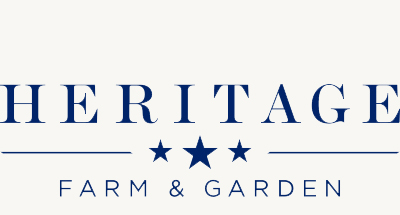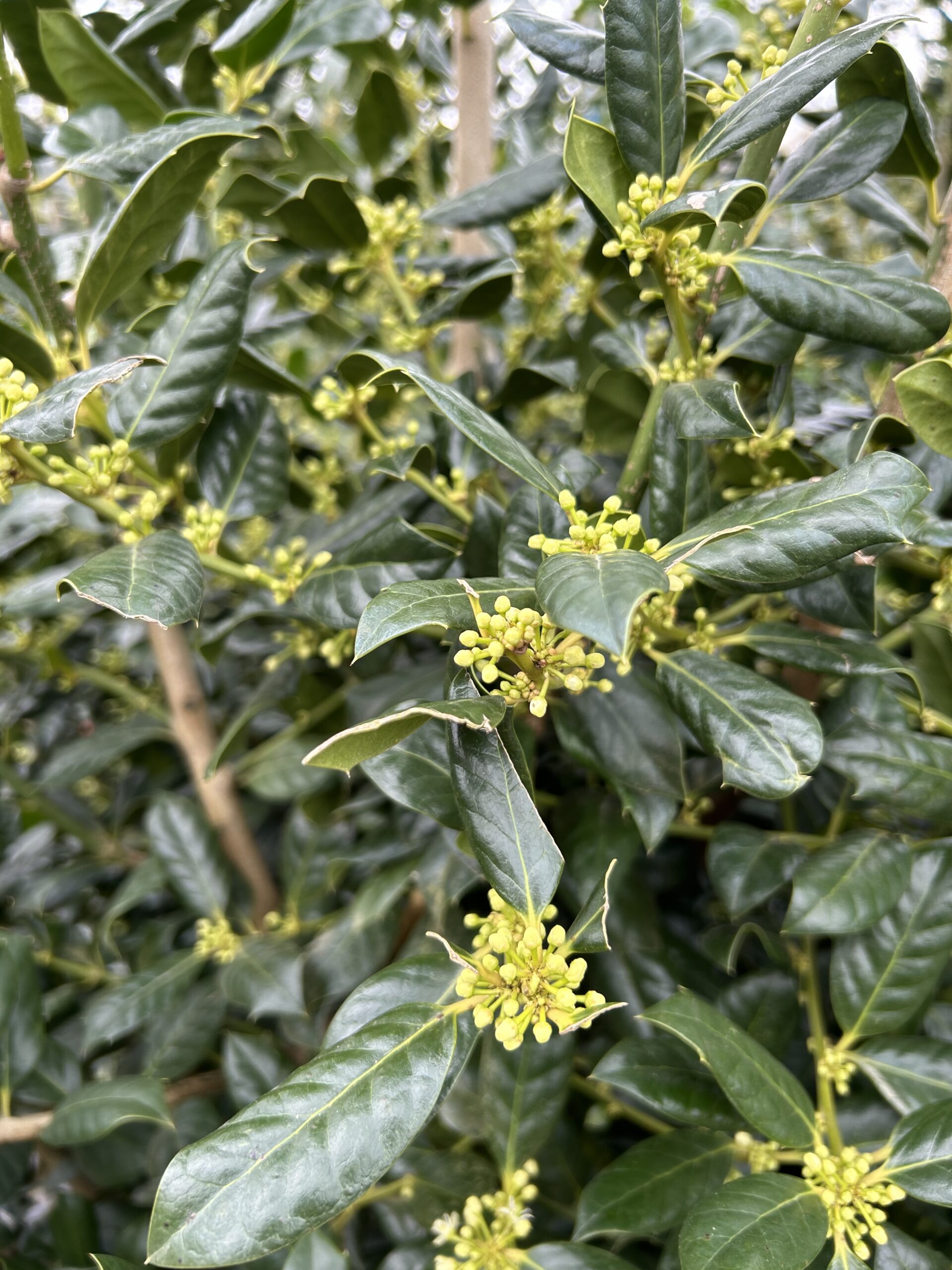
Evergreen Screening for Long Island Landscapes
Are you looking to screen an unpleasant view, buffer wind or unwanted noise, or just need some privacy? Hedges, aka living fences, provide easy solutions to these age-old problems. The following are a few recommendations for evergreen screening on Long Island.
Hollies: Ilex species
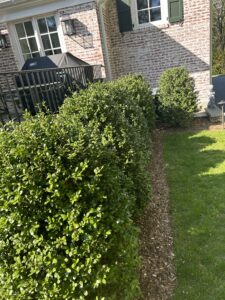
Holly, formally known as Ilex, is a large group of multi-purpose plants. Japanese holly (Ilex crenata) offers dense growing habits and shiny green leaves throughout the year. Two popular varieties include ‘Steeds’ and ‘Chesapeake.’ Grow in full to part sun locations that offer acidic, moist, yet well-drained soils. Multi-purpose, they are suitable as low or high hedges, as well as foundation plantings.
Other popular evergreen hollies for screening include Ilex ‘Nellie R. Stevens’ with its lustrous dark green leaves, and Ilex ‘Red Oak’ with its oak-shaped leaves that appear red in spring before turning to dark green. Plant in full to part sun, and acidic, moist, well-drained soils. Avoid soils that are wet or slow to drain. Ilex is reported to be deer resistant.
Manhattan Euonymus: Euonymus ‘Manhattan’
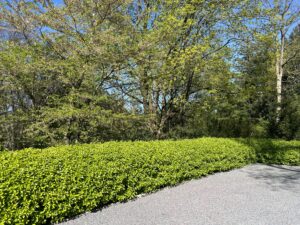
Euonymus ‘Manhattan’, commonly referred to as Manhattan Euonymus, is a worthy consideration as a fast-growing, low residential hedge or screen. Bright, glossy green leaves are evergreen on Long Island, but may be semi-evergreen in colder zones during the winter months. Grow in full sun to part shade, soil should be moist yet well-drained. Avoid soils that are wet or slow to drain. Be informed: Manhattan Euonymus is not deer resistant; use a repellent if deer are problematic in your area.
Schip Laurel: Prunus laurocerasus ‘Schipkaensis’
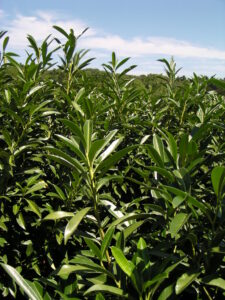
OLYMPUS DIGITAL CAMERA
‘Schip Laurel’, pronounced skip, has grown in popularity as a hardy screening plant prized for its dense form, dark glossy green leaves, and ability to grow in shade. For the best results, provide rich organic soil that is moist but well drained. Avoid soils that are slow to drain or often wet. Schips will produce flowers in late spring and blackish purple berries in early fall making it a great plant for attracting birds in the landscape. Good news – they are reported to be deer resistant.
Green Giant Arborvitae: Thuja plicata ‘Green Giant’
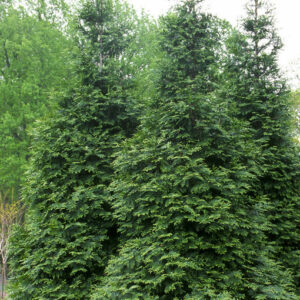
Arborvitae ‘Green Giant’ is a go-to plant for tall wind breaks, screening, and privacy. Single specimens can be used as focal points in landscape settings. ‘Green Giant’ is a vigorous, pyramidal-shaped grower that is prized for its dense rich green color. It prefers moist, fertile well-drained soil; however, it will tolerate a range of soil conditions. Best grown in full sun to part shade. ‘Green Giant’ is reported to be deer resistant.
Emerald Green Arborvitae: Thuja occidentalis ‘Emerald Green’
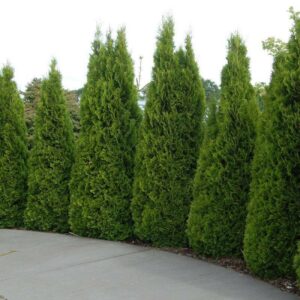
Arborvitae ‘Emerald Green’ is a narrow, pyramidal evergreen with glossy emerald-green sprays of foliage. Best grown in full sun to part shade (avoid dense shade) in moist, well-drained soil. Heavy snow and ice accumulation can cause the branches to split. Be informed: ’Emerald Green’ is not deer resistant; use a repellent if deer are problematic in your area.
What’s intentionally missing?
For many years, hemlock (Tsuga canadensis) was the ‘go to’ plant for privacy hedges and screening. Hemlocks are no longer recommended due to Hemlock Wooly Adelgid, a troublesome insect that continues to plague hemlocks in landscape settings.
Another once popular evergreen that was overused, Leyland Cypress is no longer recommended due to problems with borers, cankers, and root rot.
